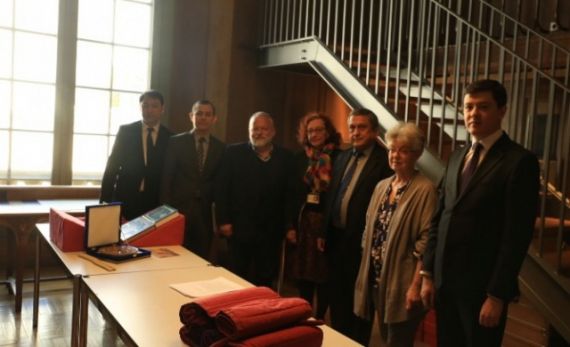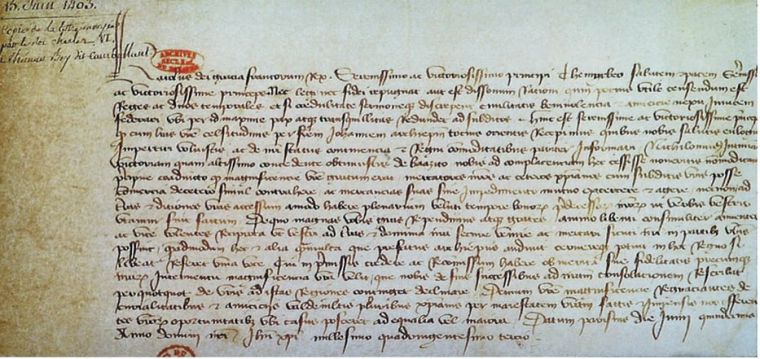Tashkent city



A group of scholars in oriental and Islamic studies visited National Library of France and the Languages and Civilization Library of France in Paris in order to introduce French cultural circles with a wide range of developments in Uzbekistan reports UzA.
The main purpose of the visit was to get acquainted with the activity of libraries in France, preservation of rare manuscripts of our ancestors and establish partnership among the institutions. It is worth noting that Languages and Civilization Library is unique in France which has a department for Central Asian documents. The library has manuscripts, rare books and research works in more than 350 languages from around 180 countries. More than hundred students, researchers and guests visit the library daily.
The sides agreed on exchange of specialists and presentation of books published in Uzbekistan which was held the same day at the library where 15 books published by Imam Bukhari International scientific-research center was shown. The Uzbek delegation felt proud to hear Mr. Benjamin Gishar’s acknowledgment that Uzbekistan stood out among Central Asian countries with its rich scientific potential. He also mentioned that Imam Bukhari’s XVII century “Sahihi Bukhari”, Ibn Sina’s “The Laws of Treatment”, Mirzo Ulugbek’s “Ziji jadidi Kuragoni”, Mahmud Zamahshariy’s “Mukaddamatul adab” were among the true treasures of the libarary and in that respect French part was willing to cooperate with Uzbek specialists to study the manuscripts.
During the talks held in the National Library of France which has 31 million books it was concluded that specialists from Imam Bukhari International Research Center and The Center for Islamic Civilization in Uzbekistan would be given access to the manuscripts in order to get copies from VIII-XI centuries Qur’an, Imam Bukhari, Khorezmi, Beruniy and Fergani’s works in Arabic and Latin languages. Within the framework of “Cultural Employee” program two practitioners from Uzbekistan would be admitted for manuscript digitalization specialization.
Press Service,
Muslim Board of Uzbekistan

At the end of the 14th century, the correspondence between the great commander Amir Timur and King Charles VI of France, along with the memoirs of the Vatican envoy Ivan Grinlon about Timur’s court, are presented at the Center for Islamic Civilization in Uzbekistan. These documents represent not only a unique chapter in the history of diplomacy but also invaluable sources that introduce our nation’s scientific and cultural heritage to the world.
In the “Second Renaissance” section of the Center’s museum, early Islamic sources, medieval scholars’ manuscripts, and rare documents from the Timurid era are brought together in one space.
In the exhibition dedicated to the era of Amir Timur, every aspect of the sovereign’s activity state administration, domestic policy, and international relations is presented on a scholarly basis. Among the displayed materials are decrees, letters, and royal correspondences written in the Arabic script. One of them is a decree granted by Amir Timur to the descendants of the sayyids of Khwarazm, reflecting the great ruler’s profound respect for scholars.
“Each era has its own laws: over time, the number of artifacts decreases. Yet the survival of original sources from the period of Amir Timur is a great fortune for history”, says Sanjar G‘ulomov, Senior Research Fellow at the Institute of Oriental Studies, Academy of Sciences of Uzbekistan.
The most captivating part of the exhibition features the correspondence between Amir Timur, King Charles VI of France, and the Vatican. Written in 1402, these letters are among the earliest examples in the history of world diplomacy. Accompanying them is the Vatican envoy Ivan Grinlon’s work “Memoirs on the Court of Amir Timur”, which provides detailed information about court life, state governance, and international relations.
These documents show that Amir Timur was not only a great military leader but also a statesman with exceptional diplomatic skill. He established active political relations with France, the Vatican, China, India, and several other nations.
It should be noted that many of the exhibits displayed in the museum are original, centuries-old artifacts that have been carefully preserved. As previously reported, the correspondence between Amir Timur and King Charles VI of France was expected to arrive in Uzbekistan, and now these historic documents have rightfully taken their place in the museum’s collection. Moreover, with the help of modern technology, visitors can view the manuscripts digitally or explore them interactively.